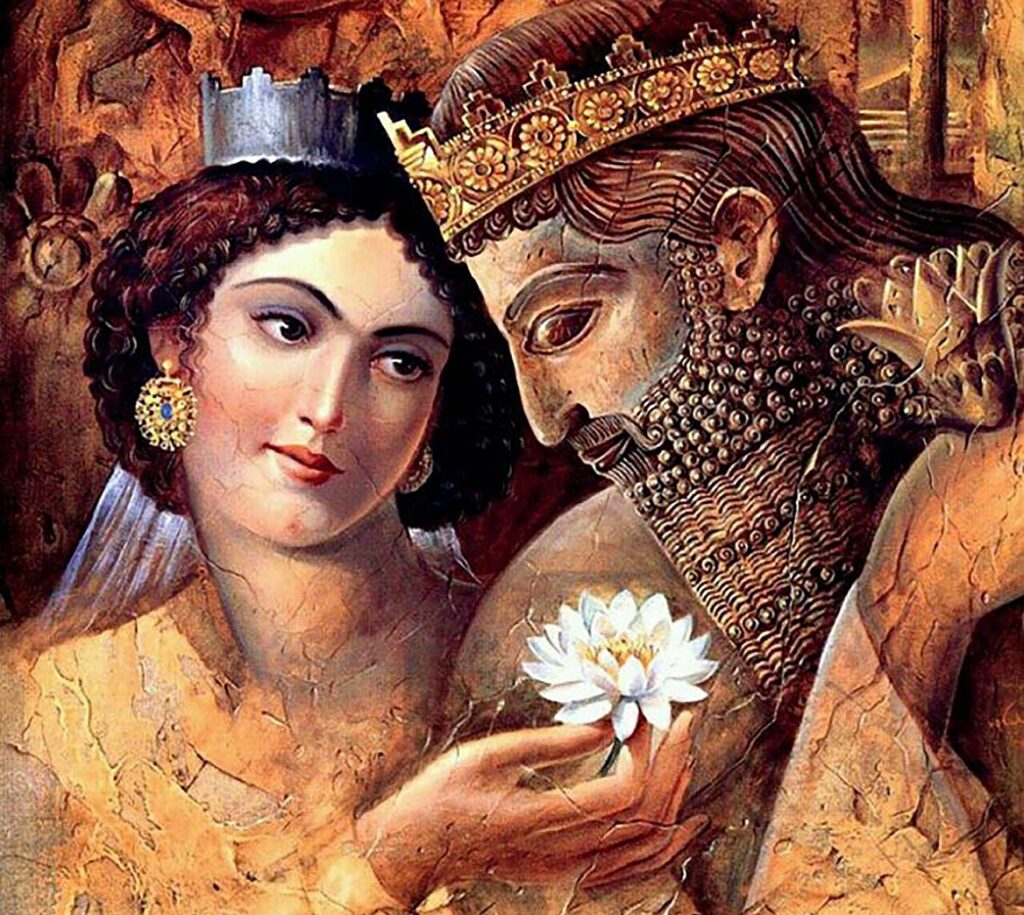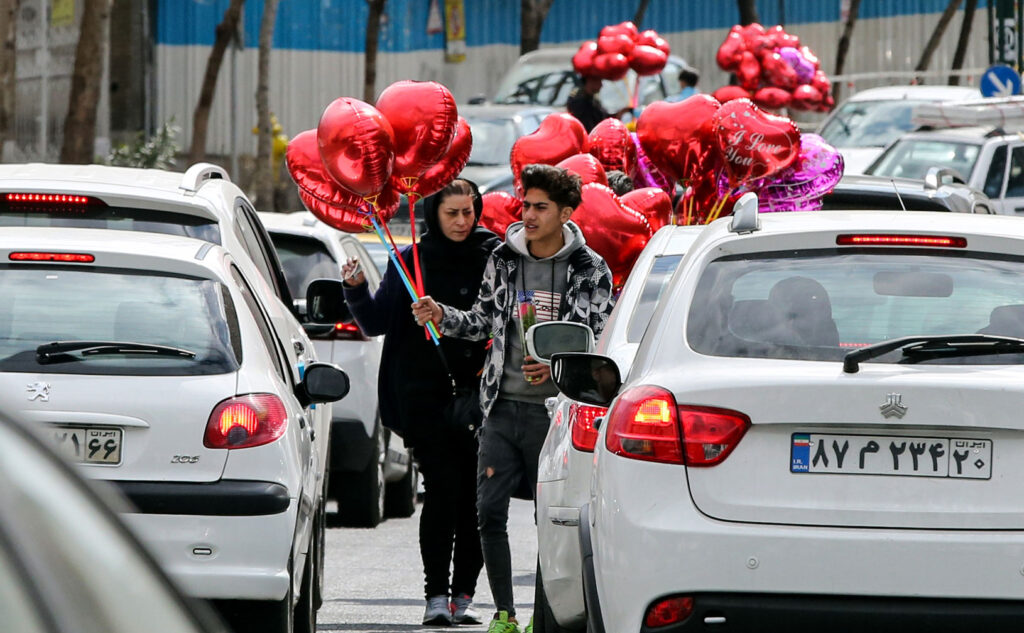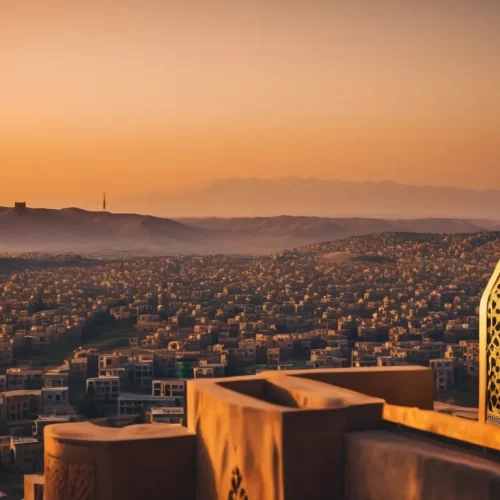In the ancient realm of Persia, where the sun painted the landscape in warm hues and the winds whispered tales of time, there existed a celebration that echoed through the corridors of history. Sepandārmazgān, a day veiled in the mystique of Zoroastrian traditions, adorned the calendar of the Achaemenid Empire, weaving a tapestry of reverence for women that transcends the sands of time.
Origins in Zoroastrian Traditions
A Glimpse into Zoroastrianism
To understand the essence of Sepandārmazgān, one must venture into the heart of Zoroastrianism, the ancient religion that shaped the spiritual landscape of the Persian people. Rooted in the teachings of the prophet Zoroaster, Zoroastrianism envisioned a world where the forces of good and evil engaged in eternal cosmic struggle. Amidst the celestial dance, the concept of divine entities, or “Amesha Spentas,” emerged, each representing a facet of divine creation.
Sepandārmazgān: The Earthly Reflection
Sepandārmazgān, also known as Espandegan or Amordadgan, found its roots in the veneration of Spenta Armaiti, the Amesha Spenta associated with divine devotion, love, and the sanctity of motherhood. As the guardian spirit of the earth, Spenta Armaiti embodied the nurturing essence that intertwined with the feminine spirit, and thus, Sepandārmazgān became a celebration dedicated to honoring women.
The Spiritual Essence of Spenta Armaiti
The roots of Sepandārmazgān delve deep into the spiritual essence of Spenta Armaiti, the radiant and benevolent Amesha Spenta who personifies divine devotion and love. In the cosmic ballet of Zoroastrian cosmology, Spenta Armaiti is envisioned as the spirit of the earth, a nurturing force that cradles all life. Her presence in the celestial pantheon bestows a sacred aura upon the celebration of Sepandārmazgān.
The Divine Tapestry
In the Zoroastrian worldview, the Amesha Spentas form a divine tapestry, each contributing a unique thread to the cosmic fabric. Spenta Armaiti, often depicted as a regal and maternal figure, weaves herself intricately into the cosmic design, embodying the interconnectedness of all living things with the earth. Sepandārmazgān, therefore, becomes a reflection of this divine interweaving, a celebration of the earthly and celestial harmony.
Spenta Armaiti and Women
As the guardian spirit of the earth, Spenta Armaiti is intrinsically tied to the feminine principle, symbolizing the nurturing, caring, and life-affirming aspects of womanhood. In honoring Spenta Armaiti through Sepandārmazgān, Zoroastrians acknowledge the vital role that women play in nurturing not only families but the very fabric of society and the world at large.
Sepandārmazgān in Achaemenid Courts
The Achaemenid Empire, under the rule of mighty kings such as Cyrus the Great and Darius the Great, embraced the teachings of Zoroastrianism and the cultural significance of Sepandārmazgān. Within the opulent courts of Persepolis, where the air was thick with the fragrance of exotic spices and the sounds of artisans at work echoed through grand halls, the celebration of Sepandārmazgān took on a regal splendor.
Royal Observances
Inscribed upon the ancient tablets of Persepolis, the royal observances of Sepandārmazgān revealed a meticulous attention to detail. Elaborate feasts adorned banquet tables, where exotic dishes symbolizing fertility and abundance paid homage to the life-nurturing qualities of Spenta Armaiti. Royal edicts proclaimed the sanctity of the day, encouraging subjects to partake in the festivities and honor the divine feminine.
Floral Offerings
Flowers, particularly the blossoms of ‘Esfand,’ took center stage in the rituals of Sepandārmazgān. These delicate blooms, believed to possess purifying qualities, were woven into garlands adorning the temples and palaces. Royal courtiers, adorned with these symbolic flowers, participated in processions that wove through the grandeur of Persepolis, paying homage to Spenta Armaiti and the women who embodied her virtues.
Sepandārmazgān’s Journey Through Dynasties
As the Persian Empire traversed the annals of time, the celebration of Sepandārmazgān endured, evolving with the rise and fall of subsequent dynasties.
Parthians and Sassanids
Under the Parthians and Sassanids, Sepandārmazgān retained its place of honor in the cultural mosaic of Persia. The vibrant bazaars of Ctesiphon and the palaces of Esfahan echoed with the laughter of women as they exchanged flowers, shared stories, and reveled in the enduring spirit of Spenta Armaiti. The celebration transcended royal courts, weaving itself into the fabric of everyday life.
Cultural Synthesis
During this time, Sepandārmazgān also encountered cultural syntheses, intertwining with local customs and traditions. The celebration became a tapestry where Zoroastrian roots interwove with the rich cultural heritage of Persia, creating a vibrant tableau that resonated with diversity.
The Eclipse and Echoes
The seventh-century arrival of Islam cast a shadow over the Zoroastrian traditions, including Sepandārmazgān. The cultural landscape of Persia underwent a transformation as the new faith took root. Yet, the echoes of Sepandārmazgān persisted, resonating through the narratives of poets, the designs of Persian carpets, and the whispers of those who sought to preserve the ancient traditions.
Symbolic Resilience
Though Sepandārmazgān’s prominence waned, it found refuge in symbolic expressions. The saffron-infused hues of Esfand blossoms persisted in the artistry of Persian miniatures, embodying resilience against the tides of cultural change. Stories passed down through generations held the embers of Sepandārmazgān’s flame, awaiting a time when the celebration would rekindle.
Awaiting Resurrection
In the cultural hibernation that followed, Sepandārmazgān lingered in the collective memory of Iran, patiently awaiting a resurrection. The celebration, obscured yet not forgotten, awaited a time when the Zoroastrian threads of the past would once again be woven into the fabric of contemporary Iranian identity.
In the vast chronicles of time, the origins of Sepandārmazgān in Zoroastrian traditions emerge as a luminous chapter—a testament to the spiritual resonance between earthly devotion and divine love. As we traverse the corridors of history, we witness the regal courts of Achaemenid kings, the vibrant bazaars of Sassanian Persia, and the cultural syntheses that breathe life into this ancient celebration. Sepandārmazgān, with roots anchored in celestial tapestries, waits patiently for its narrative to unfurl once more, as the echoes of Spenta Armaiti’s virtues linger in the collective consciousness of a nation.
Sepandārmazgān Unveiled

Timeless Traditions of Celebration
In the ancient courts of Persepolis, where the shadows of mighty columns stretched across marble halls, Sepandārmazgān unfolded as a day of jubilation. The aroma of saffron-infused dishes wafted through the air, and the laughter of women adorned in vibrant garments echoed in celebration. Sepandārmazgān, observed on the 29th day of the Zoroastrian month of Bahman, marked a moment when the Persian Empire paused to pay homage to the strength, grace, and wisdom embodied by women.
Rituals and Offerings: A Symphony of Devotion
As the sun cast its golden glow upon the ancient Persian landscape, the celebration of Sepandārmazgān unfolded in a symphony of rituals and offerings, a harmonious blend of earthly devotion and celestial reverence.
Temple Hymns and Sacred Fires
Within the sanctified halls of Zoroastrian temples, the air reverberated with hymns dedicated to Spenta Armaiti. The verses, poetic and resonant, echoed the virtues of love, devotion, and the sacred connection between the earth and its inhabitants. Sacred fires, emblematic of purity in Zoroastrianism, danced with ethereal flames, casting a warm and illuminating glow upon the worshippers.
Floral Offerings to the Earth
At the heart of Sepandārmazgān lay the ritualistic offering of flowers, a gesture of profound symbolism. The faithful adorned temples and sacred spaces with vibrant blooms, transforming these spaces into fragrant gardens dedicated to Spenta Armaiti. The act of offering flowers symbolized a tangible connection with the earth, acknowledging its nurturing qualities and embodying the principles embodied by the divine feminine.
Saffron-Infused Offerings
The celebration embraced the sensory richness of saffron, a spice deemed precious in Persian culture. Saffron-infused dishes, delicacies of unparalleled hue and flavor, adorned the feasting tables. These offerings symbolized not only the bountiful fertility of the earth but also the radiant and flavorful essence of Spenta Armaiti herself. The act of sharing these saffron-infused delights became a communal affirmation of abundance and shared prosperity.
Empowering the Feminine Spirit: A Cultural Tapestry
Sepandārmazgān, in its rituals and celebrations, transcended the realm of religious observance; it became a living cultural tapestry that intricately woven the empowerment of the feminine spirit.
Acknowledging Women’s Roles
In the bustling markets and humble abodes, men and women alike acknowledged the pivotal roles that women played in the intricate dance of life. Sepandārmazgān became a moment to express gratitude for the strength, wisdom, and nurturing qualities that women brought to their families, communities, and the fabric of Persian society.
Exchange of Gifts and Affection
Families exchanged heartfelt gifts and tokens of affection, a tradition that spoke volumes about the interconnectedness of relationships. These gifts were not mere material offerings; they were symbols of appreciation for the women who, like Spenta Armaiti, bestowed love, care, and devotion upon those around them.
Weaving Stories and Traditions
As the day unfolded, families gathered to weave stories and traditions into the celebration. Elders shared tales of ancient heroines, wise women, and the enduring spirit of Spenta Armaiti. Through these narratives, Sepandārmazgān became a living legacy, passed down through generations, connecting the past with the present.
Symbolism of Sepandārmazgān: Threads of Beauty and Resilience
Esfand Blossoms and Protective Charms
Central to the symbolism of Sepandārmazgān were the Esfand blossoms, delicately woven into garlands and adorned as protective charms. These blossoms were believed to possess purifying qualities, safeguarding against malevolent forces. Women, wearing these blooms, embraced not only their aesthetic beauty but also the inherent strength and resilience embodied by Spenta Armaiti.
Resonance in Arts and Crafts
The symbolism of Sepandārmazgān extended beyond the rituals to find expression in the arts. Persian miniatures, intricate carpets, and pottery bore the imprints of Esfand blossoms, encapsulating the enduring cultural resonance of the celebration. Artisans, inspired by the symbolism of Sepandārmazgān, crafted works that mirrored the beauty, strength, and protective nature associated with Spenta Armaiti.
Sepandārmazgān Through Dynasties: A Tapestry Unfolding
As the Persian Empire navigated the tapestry of time, the celebration of Sepandārmazgān continued to evolve, adapting to the nuances of each dynasty.
Parthians and Sassanids: A Tapestry of Diversity
Under the Parthians and Sassanids, Sepandārmazgān retained its vibrancy, weaving itself into the diverse cultural fabric of Persia. The celebration, once confined to royal courts, now flourished in the bazaars, palaces, and hamlets, reflecting the rich diversity of Persian society. The aroma of saffron-infused dishes mingled with the laughter of women, creating a tableau that celebrated unity in diversity.
Cultural Syntheses: Threads of Continuity
Sepandārmazgān encountered cultural syntheses, interweaving with local customs and traditions. The celebration became a living testament to the ability of Persian culture to absorb and assimilate diverse influences, creating a dynamic and resilient tapestry that resonated across the centuries.
The Eclipse and Echoes: Shadows of Resilience
Symbolic Resilience in the Shadows
With the advent of Islam in the seventh century, the Zoroastrian traditions, including Sepandārmazgān, faced challenges as the cultural landscape of Persia underwent transformation. Yet, the celebration displayed symbolic resilience. Though its prominence diminished, Sepandārmazgān lingered in the collective consciousness, waiting for a time when its vibrant threads would be rekindled.
Echoes in Poetry and Art
Sepandārmazgān found refuge in the poetry of luminaries like Hafez and the artistry of Persian carpets. The verses and designs bore the imprints of Esfand blossoms, echoing the enduring spirit of Spenta Armaiti. Through the arts, Sepandārmazgān continued to whisper its tales, waiting patiently for the day when its celebration would once again unfold.
In the intricate tapestry of Sepandārmazgān, rituals and offerings became a symphony of devotion, weaving threads of beauty, resilience, and cultural significance. As the celebration unfolded through dynasties, it embraced diversity and cultural syntheses, leaving imprints in poetry and art that echoed through the shadows of historical transformations. Sepandārmazgān, veiled in the mists of time, remained a cultural gem awaiting the moment when its vibrant celebration would be unveiled once more, adorning the hearts of those who sought to rediscover the ancient tapestry of Persian identity.
The Symbolism of Sepandārmazgān
Esfand Blossoms: Guardians of Beauty and Protection
Intricacies of Esfand Symbolism
At the heart of Sepandārmazgān’s symbolism lies the delicate bloom of Esfand, a flower that transcends mere aesthetic allure. The Esfand blossom, with its slender petals and vibrant hues, embodies the dual essence of beauty and resilience. The symbolism extends beyond the visual appeal, delving into the spiritual significance that transforms the flower into a potent symbol of protection and strength.
Protective Charms Against Malevolence
Esfand blossoms, intricately woven into garlands and adorned as protective charms, carry a profound belief in their purifying qualities. The Persian people, steeped in centuries of folklore, regarded these blooms as guardians against malevolent forces. Wearing Esfand blossoms on Sepandārmazgān was not merely a nod to adornment; it was a tangible gesture of seeking protection, akin to wrapping oneself in the comforting embrace of Spenta Armaiti’s virtues.
Resonance in Arts and Crafts: A Tapestry Unveiled
Inspiration for Persian Miniatures
Sepandārmazgān’s symbolic elements, especially the Esfand blossoms, found vivid expression in Persian miniatures. Illuminated manuscripts painted with exquisite detail depicted scenes of women adorned with floral garlands, capturing the essence of beauty and protection. These miniatures became visual hymns, celebrating the feminine spirit and the timeless resonance of Sepandārmazgān.
Artisans Crafting Symbolic Narratives
The symbolism of Sepandārmazgān extended to various forms of artistry, with skilled artisans crafting intricate narratives in carpets, pottery, and tapestries. Esfand blossoms, meticulously woven into the fabric of these creations, became symbols not only of aesthetic appreciation but also of the enduring strength represented by Spenta Armaiti. Each piece of art became a testament to the cultural legacy preserved through the celebration of Sepandārmazgān.
Sepandārmazgān Through the Sands of Time

The Achaemenid Legacy: Regal Courts and Timeless Celebrations
Courts of Persepolis
In the grand courts of Persepolis, Sepandārmazgān unfolded as a regal celebration, graced by the presence of Achaemenid kings like Cyrus the Great and Darius the Great. The splendor of Sepandārmazgān in the Achaemenid era went beyond mere festivity; it was a manifestation of royal endorsement, with edicts proclaiming the sanctity of the day echoing through the marble halls.
Symbolism in Royal Observances
The Achaemenid kings, cognizant of the symbolism woven into Sepandārmazgān, orchestrated elaborate feasts and processions. The aroma of saffron-infused dishes mingled with the fragrance of Esfand blossoms, creating an ambiance that transcended the temporal and delved into the celestial. Sepandārmazgān, within the Achaemenid legacy, became more than a celebration; it became a living tapestry woven with the threads of royal endorsement.
The Eclipsed Tradition: Shadows and Subtle Resurgence
Challenges During Islamic Ascendance
With the rise of Islam in the seventh century, the cultural landscape of Persia underwent a profound transformation. The Zoroastrian traditions, including Sepandārmazgān, faced challenges as the new faith established its foothold. The eclipse of the celebration was marked by the changing religious dynamics, yet the cultural resilience inherent in Sepandārmazgān allowed it to persist, albeit in the shadows.
Subtle Resurgence in Symbolism
While the overt observance of Sepandārmazgān diminished during this period, its symbolism found subtle ways to resurface. The protective charms of Esfand blossoms persisted in the artistry of carpets, the verses of poets, and the tales whispered through generations. The celebration, though obscured, left imprints that awaited a future renaissance.
Revival in Contemporary Iran: Rediscovering Ancient Roots
Renewed Interest in Cultural Heritage
In the modern era, Sepandārmazgān experienced a renaissance fueled by a renewed interest in Iran’s pre-Islamic cultural heritage. Efforts to preserve and celebrate Zoroastrian traditions gained momentum, with scholars, artists, and cultural enthusiasts contributing to the revival of ancient celebrations.
Contemporary Observances
Contemporary celebrations of Sepandārmazgān blend traditional rituals with modern expressions of appreciation for women. Families and communities, inspired by a growing awareness of cultural roots, come together to exchange flowers, share saffron-infused delights, and weave new chapters into the ancient tapestry of Sepandārmazgān. The celebration, once eclipsed, emerges into the light of contemporary consciousness.
Cultural Adaptation and Synthesis: A Tapestry in Flux
Cultural Adaptation
As Sepandārmazgān reclaims its place in contemporary Iran, there’s a delicate dance of cultural adaptation. The celebration, rooted in ancient Zoroastrian traditions, adapts to the nuances of a changing world, integrating elements of modernity while preserving its timeless symbolism.
Synthesis with Global Perspectives
The globalized world offers both challenges and opportunities for Sepandārmazgān. While cultural preservation is paramount, there’s also room for synthesis with global perspectives. The celebration becomes a bridge, inviting diverse communities to appreciate and partake in the rich tapestry of Sepandārmazgān.
Future Horizons: Weaving New Threads
Educational Initiatives
Looking towards the future, educational initiatives play a pivotal role in ensuring the continuity of Sepandārmazgān. Schools, cultural institutions, and community organizations can contribute to disseminating knowledge about the celebration, its symbolism, and the historical context.
Technological Adaptations
In an era marked by technological advancements, Sepandārmazgān can leverage digital platforms for wider reach and engagement. Online resources, virtual exhibits, and interactive experiences can breathe new life into the celebration, ensuring its relevance in the digital age.
Collaborative Cultural Diplomacy
Sepandārmazgān, with its rich cultural heritage, becomes an ambassador for Iranian identity. Collaborative cultural diplomacy, involving international partnerships and exchanges, allows the celebration to transcend borders, fostering a deeper understanding and appreciation for the cultural diversity encapsulated within Sepandārmazgān.
In tracing the journey of Sepandārmazgān through the sands of time, from the regal courts of Persepolis to its subtle resurgence and contemporary revival, the celebration emerges as a dynamic tapestry in flux. The challenges faced during periods of eclipse are met with resilience, leading to a renewed vibrancy in the modern era. As Sepandārmazgān weaves new threads into the cultural fabric of Iran, it becomes not just a celebration of the past but a living narrative with horizons that extend into the future.
Sepandārmazgān Resurrected
In the vast expanse of Iran’s cultural panorama, Sepandārmazgān emerges as a resplendent phoenix, rising from the ashes of bygone eras. Rooted in Zoroastrian traditions, this celebration of women navigated the currents of history, weathering storms and eclipses, only to be resurrected in the hearts of those who cherish the ancient legacy of Persia.
Sepandārmazgān, the day adorned with the hues of Zoroastrian reverence, continues to resonate as a celebration of the divine feminine. It stands as a testament to the enduring spirit of Persian women—guardians of hearths, weavers of stories, and bearers of a cultural legacy that transcends the sands of time. In the modern era, as Sepandārmazgān graces the calendars once more, it invites all to partake in the celebration of strength, beauty, and wisdom—a timeless journey through the threads of Zoroastrian history.




